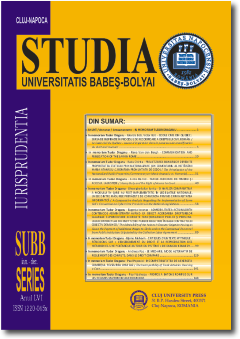CLOSING THE GAP BETWEEN FORMAL AND SUBSTANTIVE FREEDOM OF CONTRACT: CONSTITUTIONAL REALISATION OF SUBSTANTIVE FREEDOM
CLOSING THE GAP BETWEEN FORMAL AND SUBSTANTIVE FREEDOM OF CONTRACT: CONSTITUTIONAL REALISATION OF SUBSTANTIVE FREEDOM
Author(s): Luanda HawthorneSubject(s): Law, Constitution, Jurisprudence
Published by: Studia Universitatis Babes-Bolyai
Keywords: “Free the potential of each individual”; self-actualisation; substantive freedom of contract; Rawls’ principle goods; Nussbaum’s core capabilities; Collins’ social market theory .
Summary/Abstract: In most common law countries the law of contract is characterised by formal equality and formal freedom of contract. In South Africa the advent of the Constitution initiated a move away from formal equality. This move to substantive equality necessitates a reassessment of formal freedom of contract in order to establish substantive freedom. This may be effected by the Constitution and the Bill of rights. The latter emphasises human dignity, freedom and equality and the Constitution instructs in the Preamble to free the potential of each citizen. Within the law of contract support for substantive freedom is found in the requirement that human beings have an end, a manner of life in which their human potentialities should be realised. I refer to this objective as self-actualisation. Furthermore, recognition and protection of individuals’ human dignity and self-actualisation is found in John Rawls’ principle goods theory, his notion of moral reciprocity, Martha Nussbaum’s capabilities theory and Hugh Collins’ social market theory. It will be argued that Rawls, Nussbaum and Colllins’ theories may be applied to establish substantive freedom over formal freedom of contract.
Journal: Studia Universitatis Babes Bolyai - Iurisprudentia
- Issue Year: 61/2016
- Issue No: 4
- Page Range: 48-66
- Page Count: 19
- Language: English

